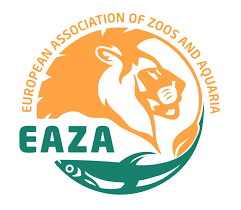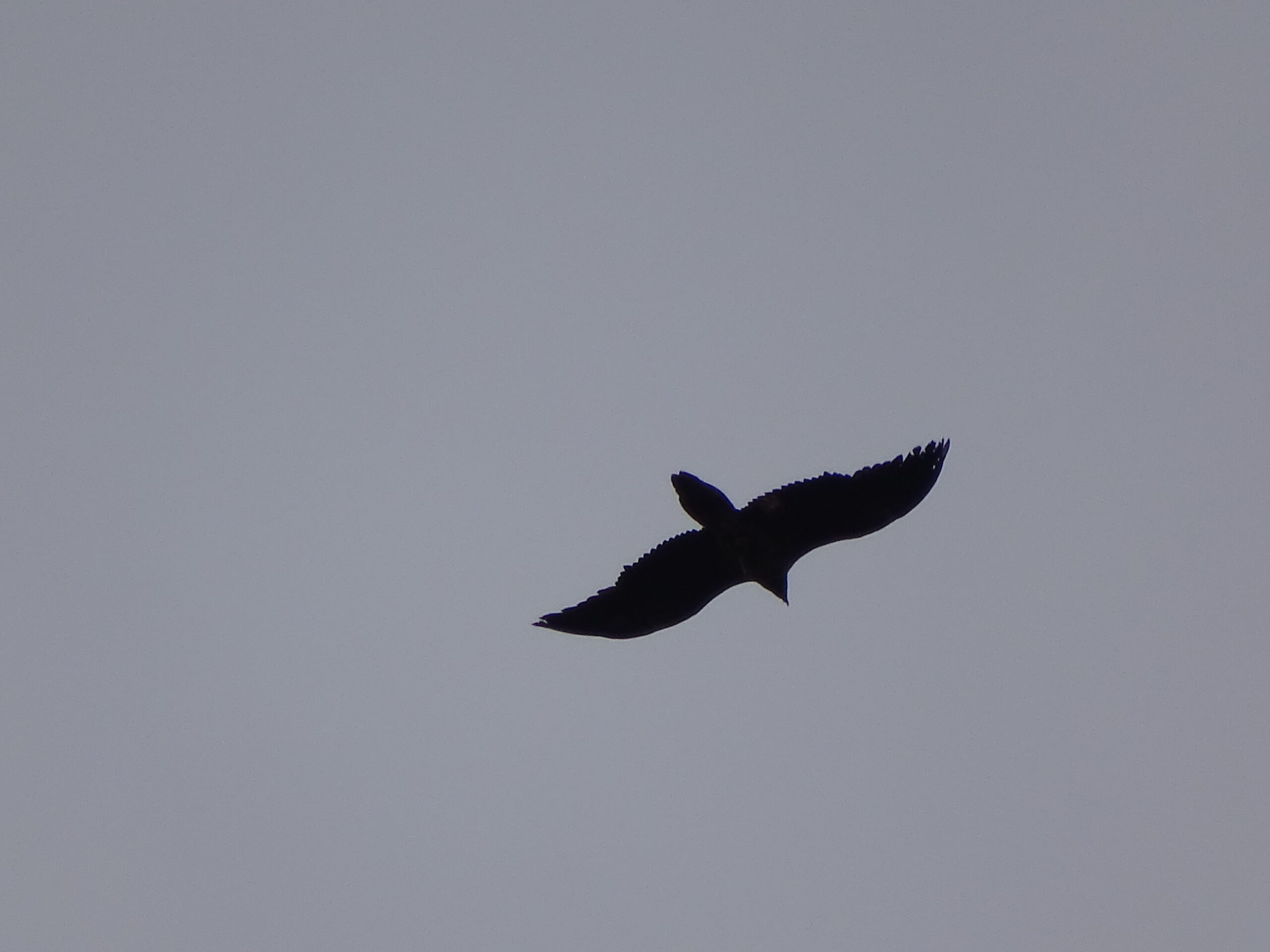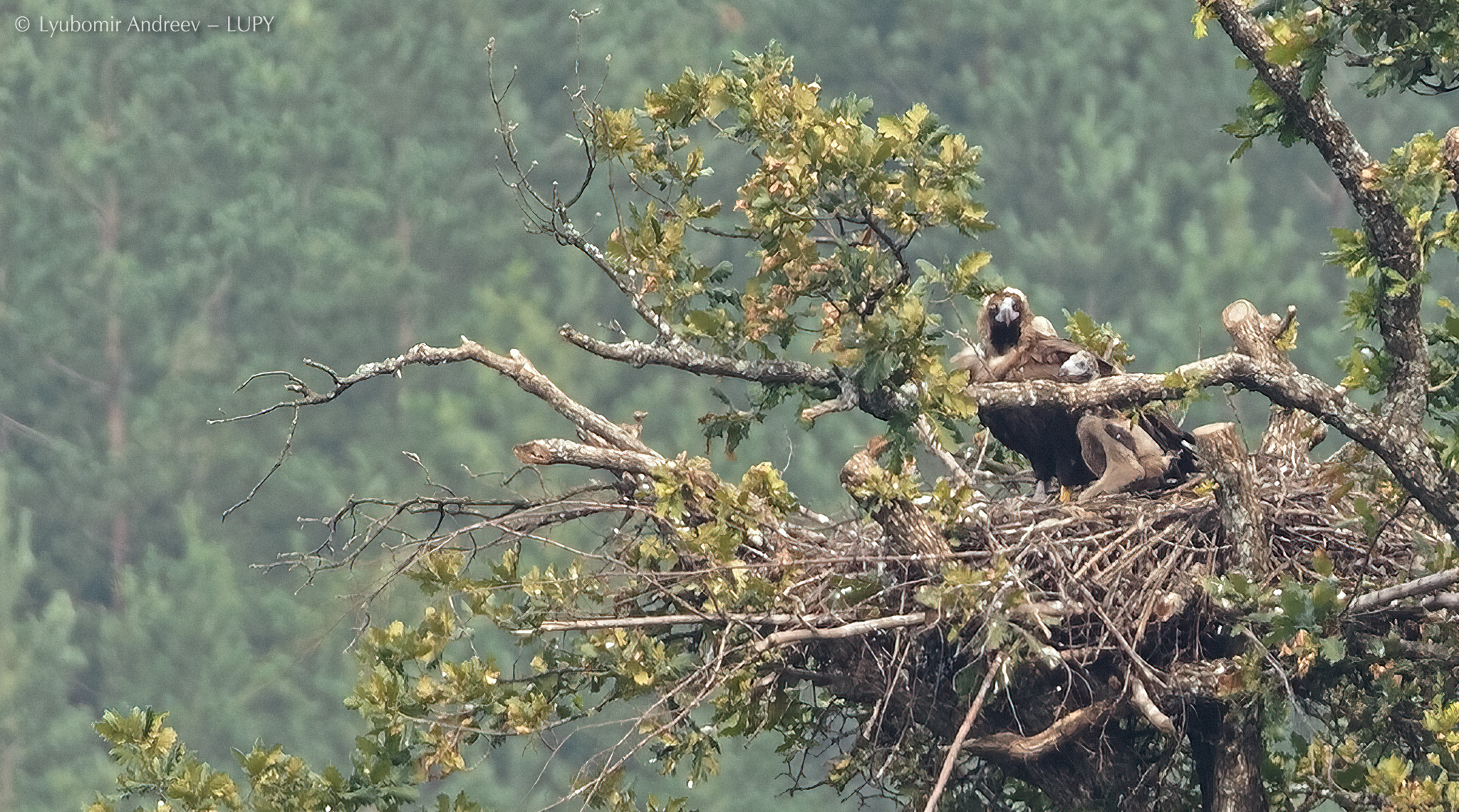The Bearded Vulture breeding season of 2022/23 has been the most successful one so far! The hard work of both the Bearded Vultures and human keepers has paid off, with a record-breaking number of eggs laid and chicks hatching. This new record brings hope to the efforts of reintroducing and reinforcing the species in areas where it went extinct or is in decline.

Bearded Vulture captive breeding programme sets new record
The Bearded Vulture Captive Breeding Network, coordinated by the Vulture Conservation Foundation (VCF) on behalf of EAZA’s EEP (Bearded Vulture EEP), achieved a new milestone. The Network consists of partnerships with zoos, private collections and specialised breeding centres that breed the species in captivity to support their conservation in the wild.
This season, a total of 79 eggs were laid, with 45 in specialised breeding centres and 35 in zoos, rescue centres and other establishments. So far, out of the 47 breeding pairs, 36 eggs have hatched, and only one chick has died, with 35 still alive. This number is a new record for the Bearded Vulture EEP in terms of eggs laid and chicks hatched.
Update: 18 April 2023
In an unexpected turn of events, the pair at Pairi Daiza laid a double clutch, breaking our record for eggs laid in a single season with a total of 80. Unfortunately, the first egg seemed to be infertile during the first nest control on its 58th day.
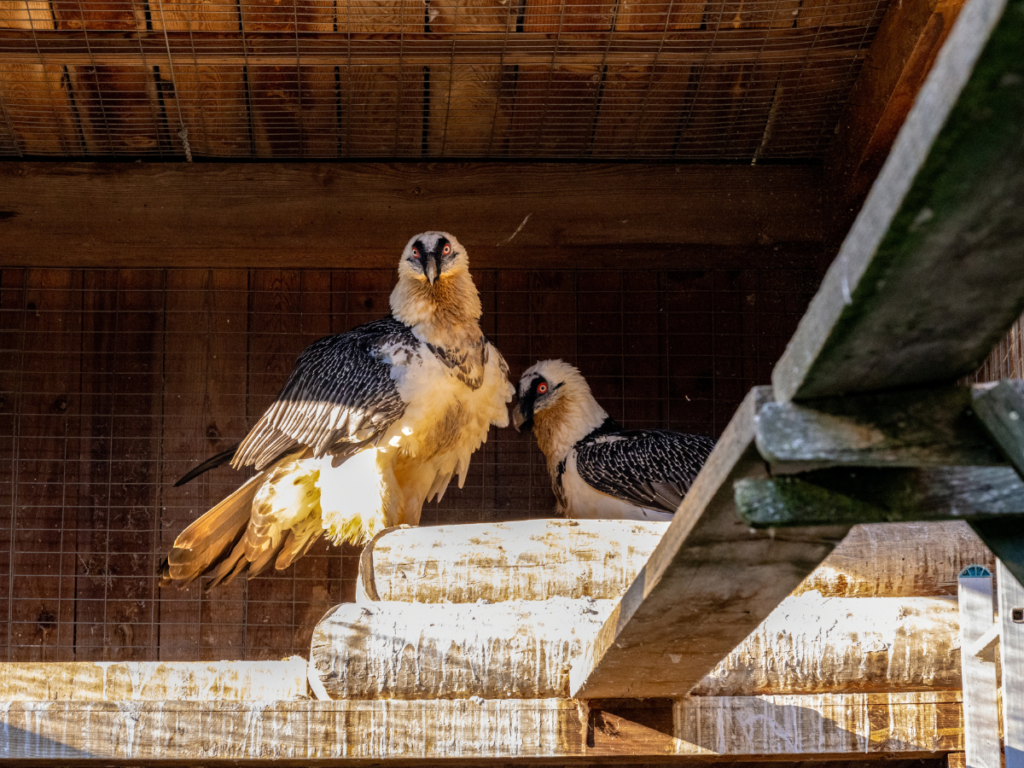

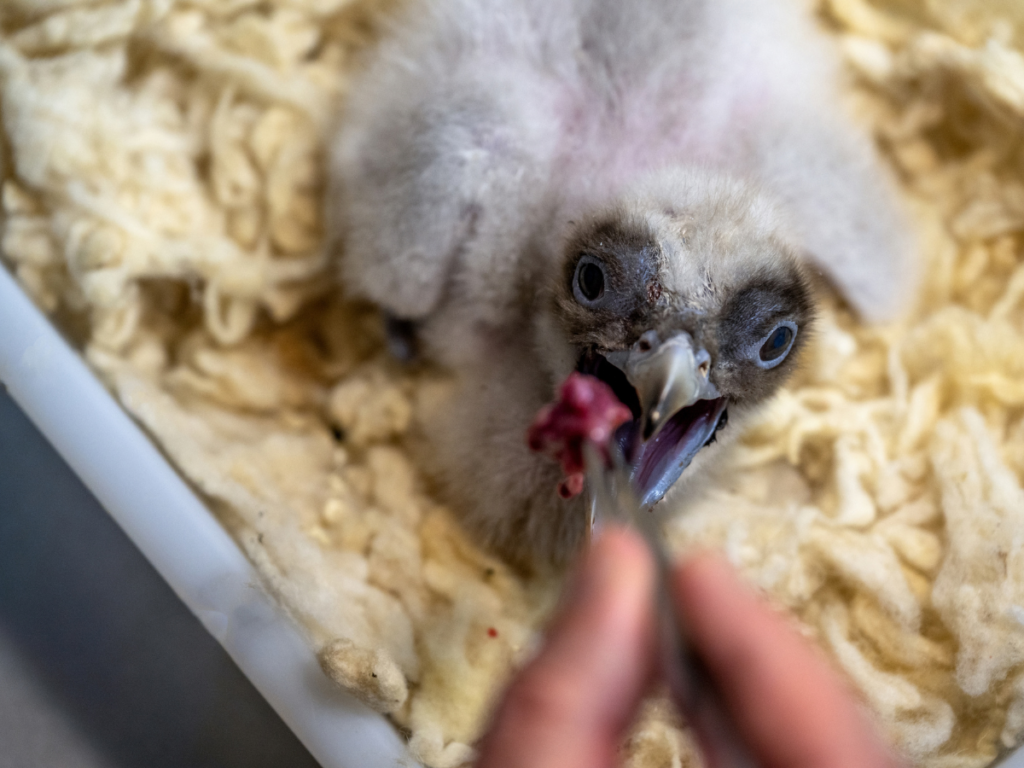
What does this mean for Bearded Vulture conservation?
As we carefully evaluate each and every chick, we consider a multitude of factors, from their sex to their genetics, in order to determine their ultimate destination.
While some birds will be released into the wild, others will need to remain in captivity to ensure the stability of the captive population. The Bearded Vulture EEP population is experiencing an ageing effect, with some pairs no longer producing eggs. To maintain a stable production of captive-bred chicks in the long term and ensure viable Bearded Vulture populations in the wild, we must maintain a high number of captive birds that are also genetically diverse.
The VCF is actively involved in several reintroduction projects, alongside our numerous partners, to restore the Bearded Vulture population to the wild. In the Alps, this programme has been ongoing since the 1970s, resulting in a successful return of the species to the region. Currently, releases in the region are ongoing, focusing on increasing genetic diversity and expanding the population towards the east. Apart from the Alps, the VCF is also involved in reintroduction efforts in other areas such as Andalusia, Massif Central, Pre-Alps, and Maestrazgo. Furthermore, there is an ongoing restocking project in Corsica, which aims to prevent the species from becoming extinct on the island.
How do reintroduction programmes work?
The Bearded Vulture we release into the wild come from a captive breeding background, hatching in different facilities within the Bearded Vulture EEP. Captive breeding plays a vital role in fulfilling the ambition to restore the European Bearded Vulture populations in the wild. Once the captive-bred vultures are around 90 days old, they are released into priority areas where the species have disappeared or are under threat. Before release, the vultures are equipped with identification rings and GPS transmitters, and a unique set of their feathers are bleached, to monitor their movements and progress in the wild, while also evaluating our conservation efforts.
Our Bearded Vulture reintroduction projects use the hacking method to release captive-bred Bearded Vultures into the wild, replicating the species’ natural way of fledging. The vultures are placed in artificial nests in suitable habitats that resemble the wild nests of the species. The project staff feed and observe the progress of the vultures from afar, enabling them to acclimatise to the natural environment until they are ready to take their first flight 20 to 30 days after their release. With this technique, the nestlings can associate the release site with the hatching area, so when they reach breeding age at around 8-10 years old, they select these places to breed.
The VCF is grateful for the partnership of zoos, private collections and specialised breeding centres within the Bearded Vulture EEP for their dedication and diligence in breeding the species in captivity to support conservation efforts in the wild. Without their support, the return of the species to areas where it disappeared would not have been possible.

